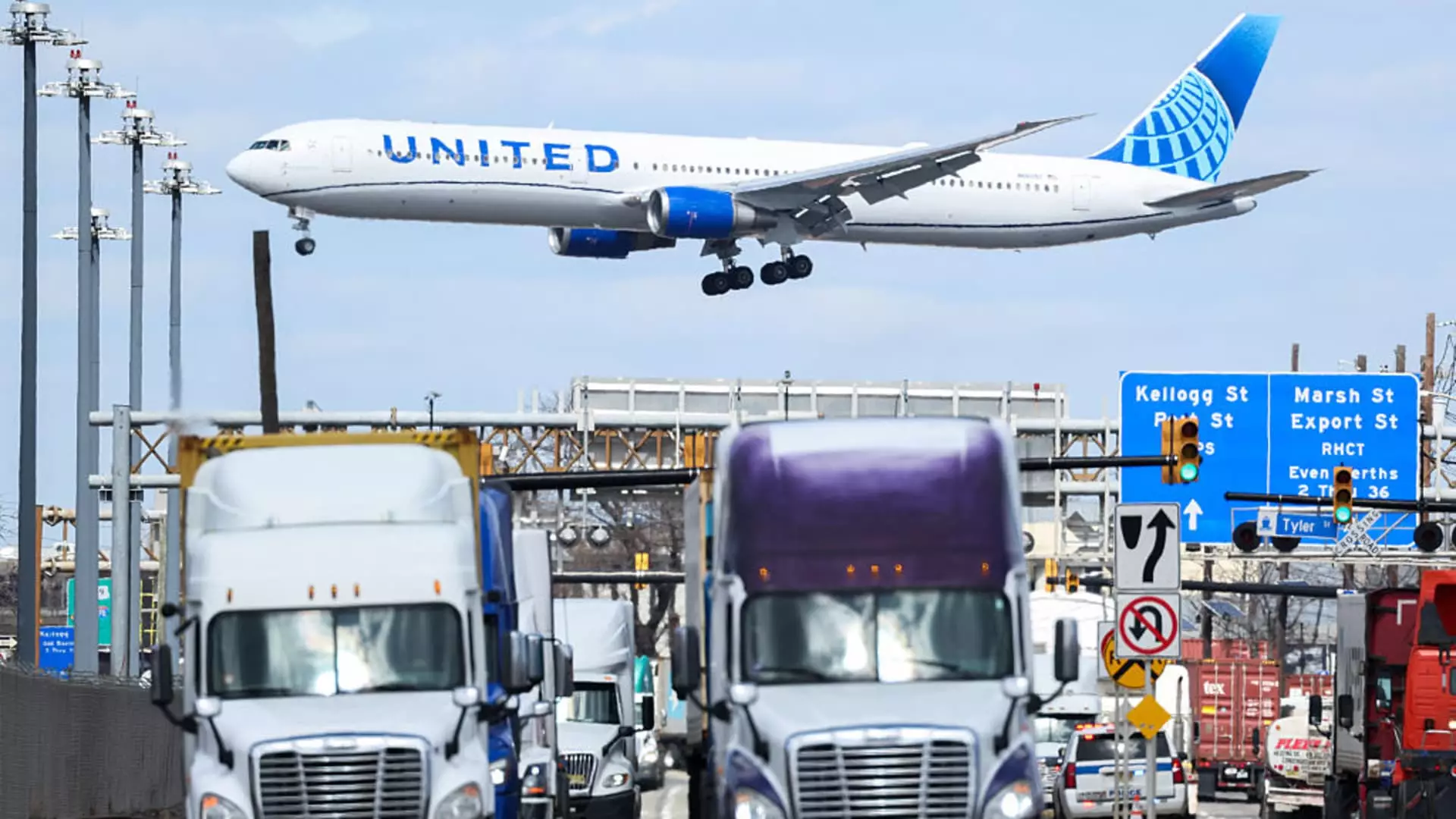In an era marked by economic unpredictability, United Airlines finds itself at a crossroads. The company has opted to maintain its bullish full-year forecast while simultaneously preparing for a potentially grim outlook should the U.S. economy venture into recession. This dual-forecast strategy highlights not just a unique approach to corporate forecasting but sheds light on the complex reality faced by many businesses today. The corporate world requires agility and foresight now more than ever, and United appears to be walking a tightrope—balancing optimism with caution.
The airline expressed confidence in its profit generation even amid looming recessionary threats. However, it’s important to wonder whether the leadership’s reliance on past successes might hinder their adaptability in an evolving marketplace. If the economic winds shift dramatically, can United Airlines remain steadfast, or will it find itself scrambling to adjust to a rapidly changing environment?
Calculating Risk: A Double-Edged Sword
United’s decision to disclose two distinct earnings forecasts paints a picture of managerial sophistication but raises questions about the viability of their optimistic outlook in a recessionary context. By offering projections of adjusted earnings ranging from $7 to $9 per share if economic conditions worsen, the company demonstrates an understanding of potential headwinds. However, does this approach reflect foresight or merely a hedging of bets?
To assert that the macroeconomic climate is impossible to predict suggests a profound frustration with systemic unpredictability. These remarks may resonate with a wide array of stakeholders who, like the airline, feel trapped in an unpredictable environment of fluctuating demand, rising costs, and shifting consumer behavior. While caution is essential in today’s economic landscape, one must wonder if this duality of optimism and pessimism might dilute confidence among investors and consumers alike.
Changing Skies: Flight Cuts and Booking Trends
In response to disappointing domestic travel demand, United has announced a reduction in domestic flights by approximately 4% starting this summer. This strategic move may appear prudent at first glance, as it aims to match supply with declining demand. However, it raises a fundamental concern about the long-term implications of such cutbacks. The current trend of increased demand for international flights indicates a shift that the airline must adapt to with agility and insight.
While some may argue that targeting higher-end clientele through premium-cabin bookings could buffer against domestic declines, the strategy inherently risks alienating everyday travelers. Not every consumer is prepared to embrace the cost of premium travel, particularly during uncertain economic times. Therefore, can United effectively manage this narrow focus without jeopardizing its broader market base?
The Uncertain Future of Airline Revenues
In the first quarter, United Airlines recorded a notable profit of $387 million. Yet, while this figure seems promising, a deeper analysis tells a far more complex story. Despite a unit revenue decline of 3.9% for domestic flights, international routes posted gains, suggesting an uneven recovery landscape that from a financial perspective could lead to instability.
Furthermore, it’s essential to highlight that while premium-cabin bookings surged by 17% year-over-year, one would be remiss not to ponder the long-term sustainability of this trend. The economic pressures from President Trump’s trade war and mass government layoffs have created a tense atmosphere, potentially limiting consumer willingness to pay for luxury air travel.
Evolution or Stagnation? The Industry at a Crossroads
The airline industry stands at a critical juncture. United and its primary competitor, Delta Air Lines, have felt the tremors of a changing marketplace and have responded with cautious growth strategies. However, are these approaches enough to prepare for potential economic downturns? Should airlines prioritize resilience over growth in uncertain times?
The bold predictions of profitability from premium offerings might soon face challenges from increasing economic pressures on the middle class. If United Airlines aims to shield its profits against recessionary winds, integrating more sustainable practices rather than merely trimming domestic flights could be crucial. Adapting to evolving consumer preferences while astutely navigating economic headwinds may well determine the airline’s fate in the cutthroat skies of the airline industry.
United Airlines stands as a representative of the broader challenges and opportunities that define today’s corporate landscape. The path ahead remains murky, but by acknowledging both the potential bright spots and the significant risks, United can make informed choices that align with its legacy and future aspirations.

